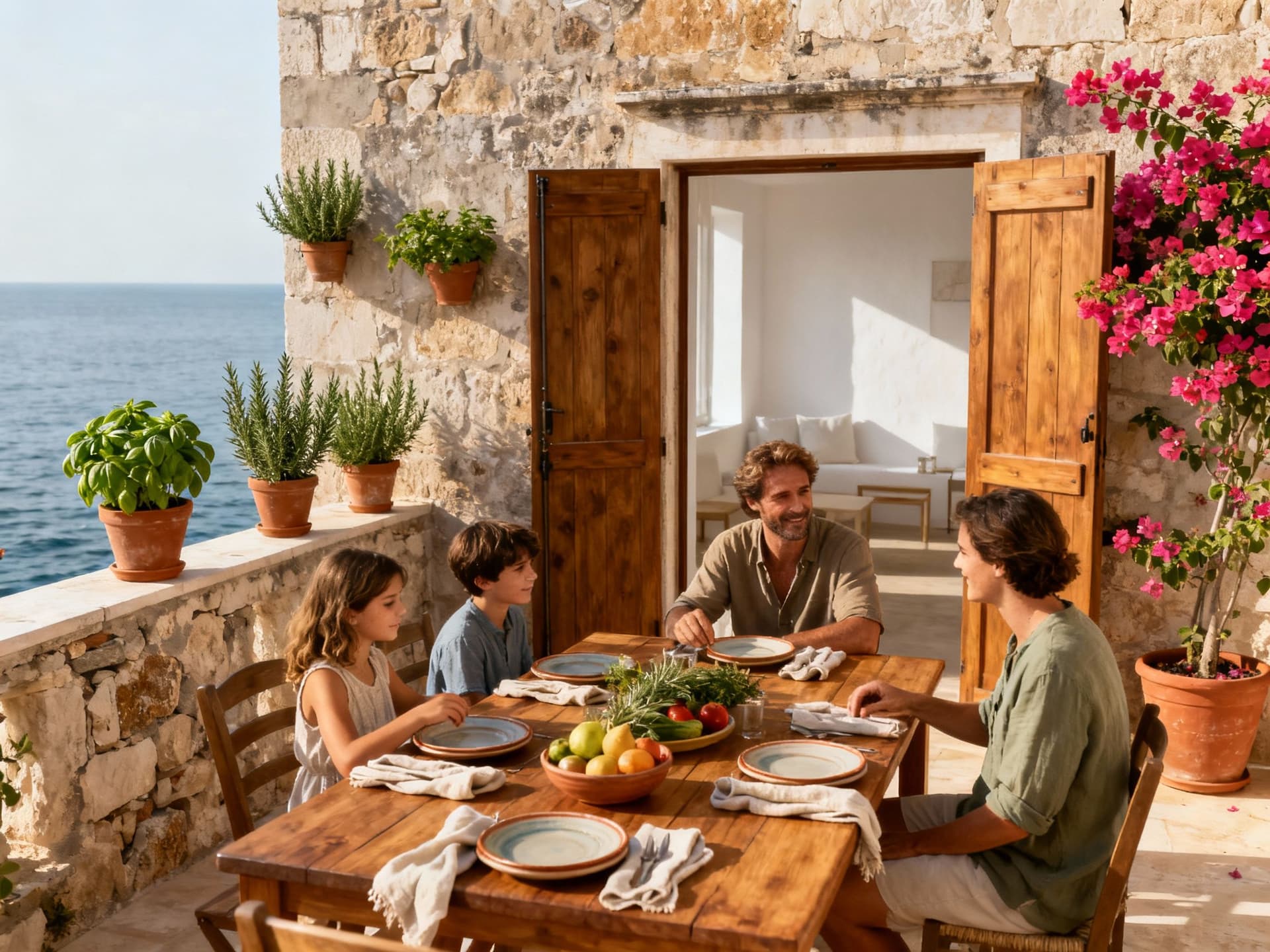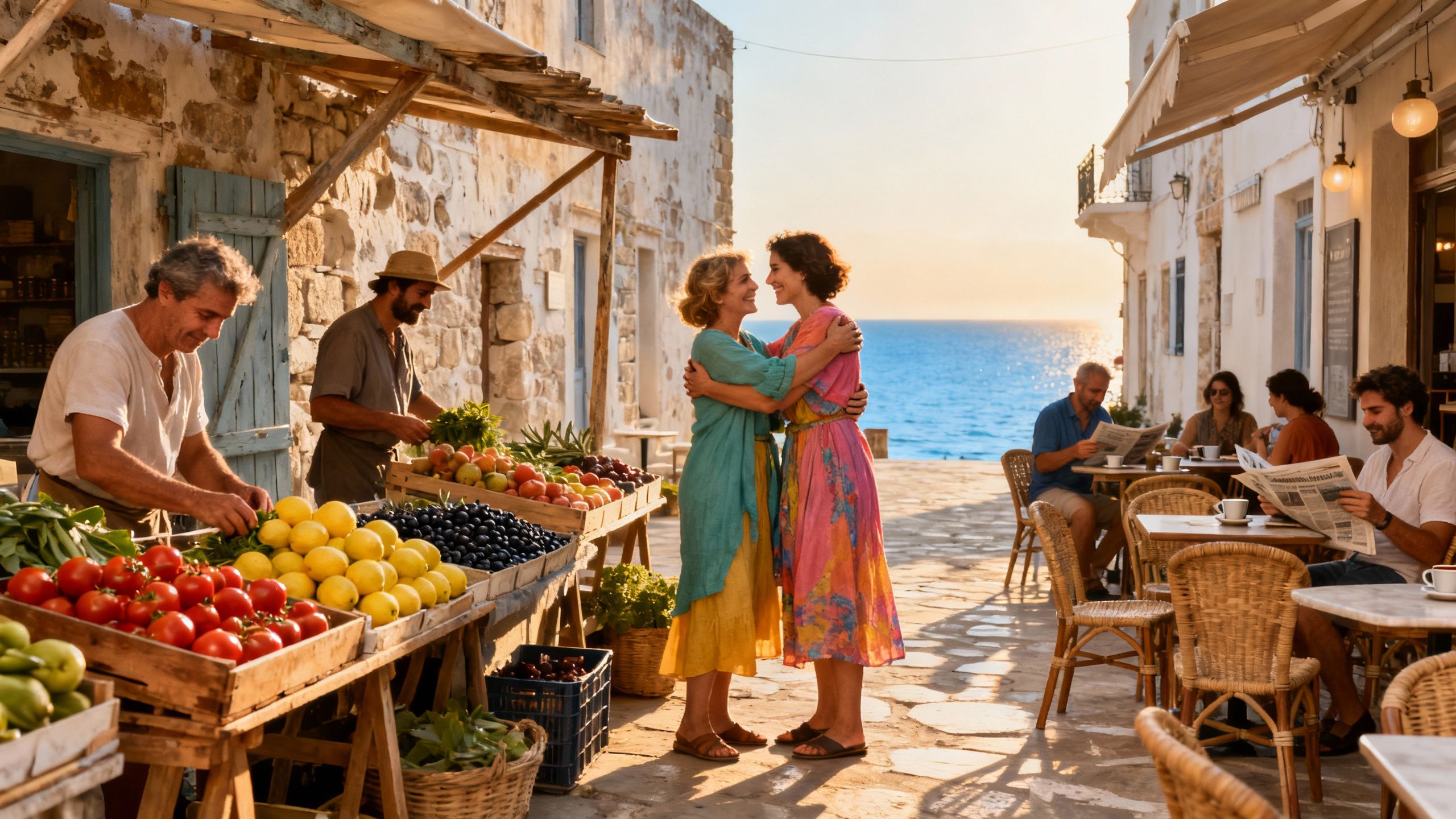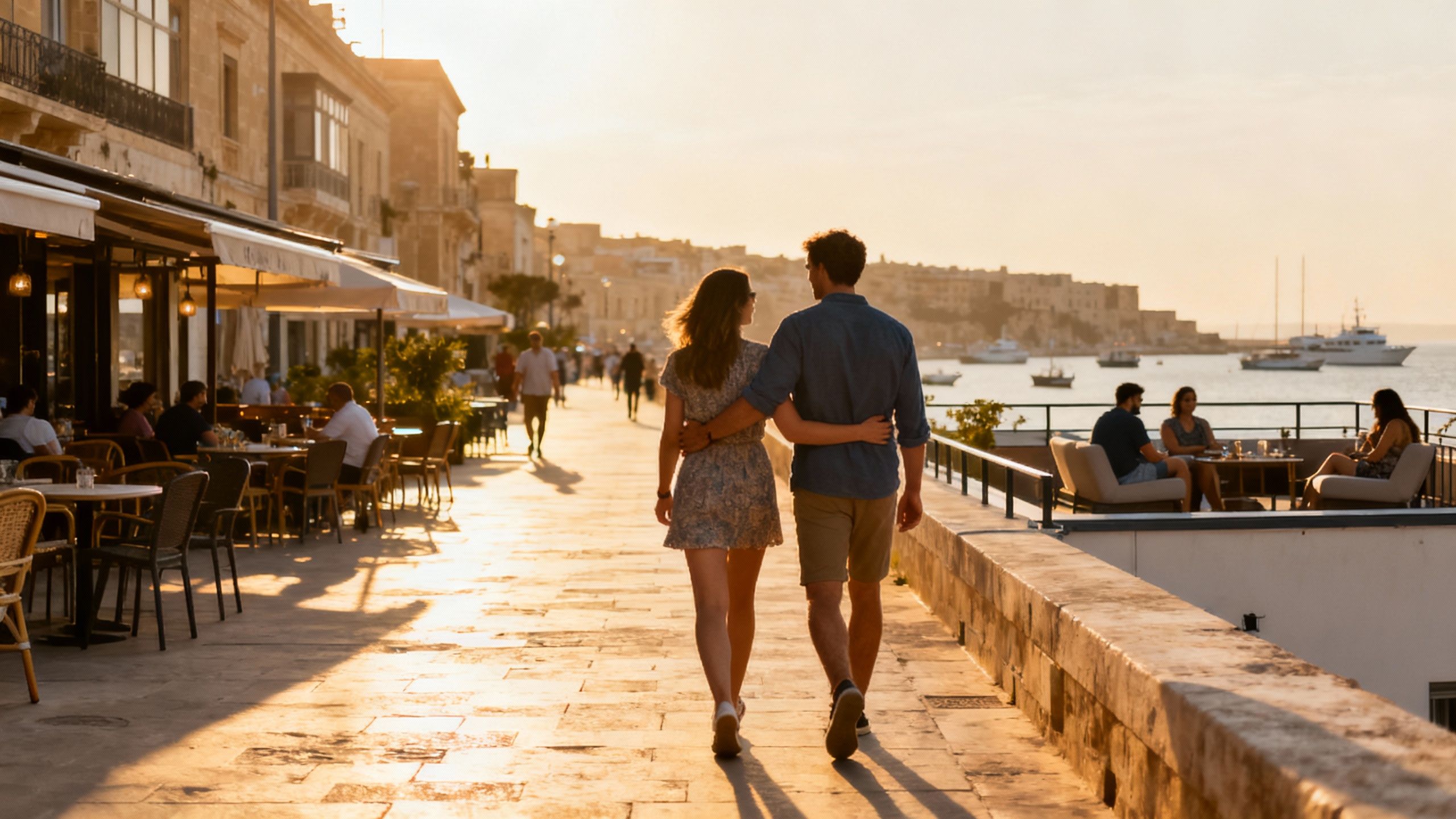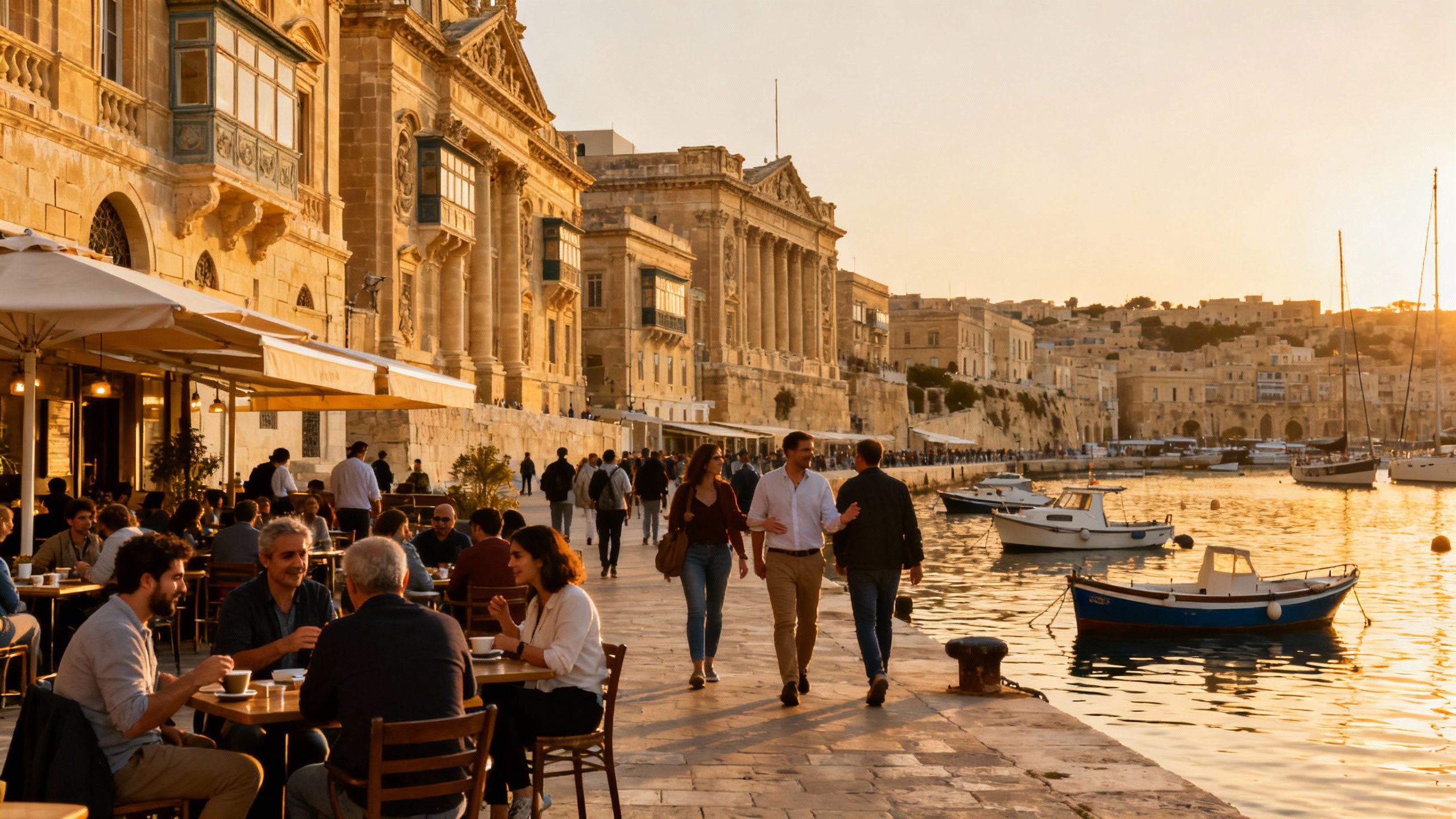How Croatia’s New Tax Rhythm Changes Holding Costs
How Croatia’s coastal rhythm and new municipal property tax reshape holding costs — practical steps to confirm transfer tax, annual rates and rental rules before you buy.
Imagine an early morning espresso under plane trees on Split’s Riva, the Adriatic glassy and clear, fishermen unpacking their catch for the day. In Croatia the rhythm of life is anchored to market mornings in Rovinj, ferry timetables in Hvar and Saturday fish grills in Kaštel. That rhythm shapes decisions about property in ways numbers alone do not: where you buy determines more than price — it alters tax exposure, the way you rent, and how local rules shape daily life.
Living the Croatian Life — weather, food and neighbourhood character

Croatia feels different from one coast to the next. In Zagreb there is an urban cadence of boulangeries, leafy promenades and late‑afternoon cafés; in Istria small hill towns hum with truffle hunters and open‑air markets; along Dalmatia the pace slows to the rhythm of the sea, where terraces and stone houses frame languid evenings. For buyers this variety matters because municipal rules — and therefore the taxes you pay — are local decisions that reflect these rhythms.
Split & Dalmatian islands — boats, stone alleys and seasonal value
Walk the stairways of Varoš in Split and you feel a property’s seasonal potential: narrow streets, sea glimpses and proximity to ferries make short‑let income tempting. But islands and tourist towns now carry a different calculus: local councils set higher annual property tax bands for holiday homes, and a summer rental business will face distinct VAT and income rules compared with long‑term lets. That reality should shape how you price yield versus liveability.
Istria & Zagreb — food, permanence and a different tax mood
In Rovinj or Motovun you buy into truffle seasons, olive presses and a network of small producers; properties here often function as both family homes and countryside retreats. Zagreb, meanwhile, is where permanence pays off: access to services, schools and cultural institutions influences both long‑term capital preservation and municipal tax choices. When considering a purchase, think beyond façade and consider how seasonal life will change the property’s fiscal profile year by year.
- Lifestyle highlights to look for when choosing an area
- Market mornings (e.g., Split fruit market, Pazar in Zadar) — fresh produce, social life and local rhythms that make a neighbourhood feel lived‑in.
- Seafront promenades (Riva, Korčula waterfront) — neighbourhoods that trade quiet winters for busy summers; taxation and rental demand follow that cycle.
- Town squares and konobas (local taverns) — community anchors that sustain year‑round desirability and affect long‑term stewardship of property.
Making the move: practical considerations that flow from lifestyle choices

When the romance of a stone terrace meets paperwork, three numbers typically matter: the transfer tax, annual property tax set by the municipality, and the tax treatment of rental income. The transfer tax is payable on most purchases and is generally 3% of market value when VAT is not charged. More recently, municipalities determine an annual property tax per square metre; rates vary widely and materially affect annual holding costs.
Property transfer and VAT — when you pay 3% and when you don’t
Most private resales attract the real estate transfer tax of 3% of market value, unless the transaction is subject to VAT (common for new builds sold by VAT‑registered developers). That distinction — VAT versus transfer tax — is the first negotiation point. Contracts should expressly state which regime applies and include clear price allocations so you are not surprised by a transfer tax bill after signing.
How the new municipal property tax changes the holding cost
From 2025 municipalities set annual property tax rates between €0.60 and €8.00 per usable square metre. For a 100m² coastal apartment that difference can mean €60 versus €800 per year — a non‑trivial gap that affects rental yield, carrying costs and whether a property makes sense as a second home. Ask local agents for the municipality’s current rate and confirm exemptions for primary residences or heritage properties.
- Steps to verify tax exposure before you sign
- Request the municipality’s current property tax table and ask for a written calculation of annual tax for the property’s usable square metres.
- Confirm whether the sale is VAT‑liable (new build/developer sale) or subject to the 3% transfer tax; insist on an explicit clause in the purchase contract.
- If you intend to rent, ask an accountant about local income tax and VAT thresholds — short‑term tourist lets often face different rates and reporting rules than long‑term leases.
Insider knowledge: what expats often overlook and how to avoid regrets
Expats frequently fall in love with a town before they ask how the local council treats holiday homes, how rental registration works, or whether a property’s renovation history triggers VAT. Small details — an unresolved building permit, an inherited easement to a neighbour, or a municipality’s higher tax band — have outsized effects on cost and livability. Local expertise is not optional; it is how the romantic vision becomes sustainable reality.
Cultural and administrative quirks that affect taxes and ownership
Ownership formalities in Croatia hinge on documents such as an OIB (personal tax number) and clear land‑registry entries. Foreign buyers should confirm reciprocity rights for land acquisition where applicable and work with a local notary and tax adviser. Practicalities like obtaining OIBs, registering utility accounts, and understanding local zoning will determine whether a property is immediately usable or requires further investment.
Longer-term questions: inheritance, stewardship and resale
Croatia’s legal framework treats ownership, inheritance and company structures pragmatically: many buyers use a Croatian d.o.o. for estate planning, while others prefer personal ownership for simplicity. Think through succession early — local inheritance rules and probate practice can affect how easily your property passes to heirs and whether renovations will trigger tax events. A small amount of planning preserves both pleasure and value.
- Practical tips expats wish they’d known
- Confirm municipal tax rate in writing before offer — the same building can fall into different bands across municipalities.
- Ask whether the seller has recently claimed VAT on construction or renovations — it may change who pays transfer tax.
- If you plan short‑term rentals, retain an accountant familiar with Croatia’s rental VAT thresholds and the 2024–25 shifts in short vs long‑term rental taxation.
- How to choose local advisors who preserve the lifestyle you love
- Hire a notary experienced in coastal sales and island conveyancing; they will check title, easements and occupancy permits.
- Engage a tax adviser who can model transfer tax, annual property tax and potential VAT on rentals, and who will provide a written cost projection.
- Work with a local agency that understands which neighbourhoods sustain year‑round life (Zagreb, Istrian hill towns) versus those that are seasonally vibrant (Hvar, Dubrovnik walls).
If the thought of morning markets, island ferries and late‑night konobas appeals, Croatia can reward both the senses and the balance sheet — but only when lifestyle and tax planning are addressed together. Begin by requesting municipal tax rates, confirming VAT status of the sale, and commissioning a short fiscal projection from a Croatian tax advisor. With that clarity you can buy with conviction: a place to live, and a legacy to steward.
Having moved from Stockholm to Marbella in 2018, I help Scandinavian buyers navigate Spanish property law, restoration quality, and value through authentic provenance.


